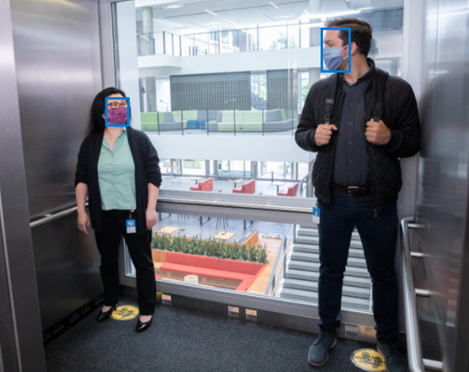What is Video Analysis?
Video Analysis includes video-related features like Spatial Analysis and Video Retrieval.
Spatial Analysis
Important
On 30 March 2025, Azure AI Vision Spatial Analysis will be retired. Please transition to Azure AI Video Indexer or another open-source solution before the specified date. We encourage you to make the switch sooner to gain the richer benefits of Azure AI Video Indexer. In addition to the familiar features you are using, here's a quick comparison between Azure AI Vision Spatial Analysis and Azure AI Video Indexer.
| Feature | Azure AI Vision Spatial Analysis | Azure AI Video Indexer |
|---|---|---|
| Edge support | Yes | Yes |
| Object Detection | People & Vehicle detection only | Detects 1000+ objects |
| Audio/Speech Processing | Not supported | Supported (includes speech transcription, translation and summarization) Supported >(includes speech transcription and sentiment analysis) |
| Event Detection & Tracking | Supported (tracking people & vehicles, event detection) | Not supported at the Edge yet. Is partially supported at the Cloud. |
| Azure Arc Support | Not supported | Native support |
| Focus Area | Visual analysis with specialized tracking | Comprehensive analysis of both audio and visual content |
From now until 30 March 2025, you can continue to use Azure AI Vision Spatial Analysis or transition to Azure AI Video Indexer before the specified date. After 30 March 2025, the Spatial Analysis container will no longer be supported and will stop processing new streams.
You can use Azure AI Vision Spatial Analysis to detect the presence and movements of people in video. Ingest video streams from cameras, extract insights, and generate events to be used by other systems. The service can do things like count the number of people entering a space or measure compliance with face mask and social distancing guidelines. By processing video streams from physical spaces, you can learn how people use them and maximize the space's value to your organization.
Try out the capabilities of Spatial Analysis quickly and easily in your browser by using Azure AI Vision Studio.
People counting
This operation counts the number of people in a specific zone over time using the PersonCount operation. It generates an independent count for each frame processed without attempting to track people across frames. This operation can be used to estimate the number of people in a space or generate an alert when a person appears.

Entrance Counting
This feature monitors how long people stay in an area or when they enter through a doorway. This monitoring can be done using the PersonCrossingPolygon or PersonCrossingLine operations. In retail scenarios, these operations can be used to measure wait times for a checkout line or engagement at a display. Also, these operations could measure foot traffic in a lobby or a specific floor in other commercial building scenarios.

Social distancing and face mask detection
This feature analyzes how well people follow social distancing requirements in a space. The system uses the PersonDistance operation to automatically calibrate itself as people walk around in the space. Then it identifies when people violate a specific distance threshold (6 ft. or 10 ft.).

Spatial Analysis can also be configured to detect if a person is wearing a protective face covering such as a mask. A mask classifier can be enabled for the PersonCount, PersonCrossingLine, and PersonCrossingPolygon operations by configuring the ENABLE_FACE_MASK_CLASSIFIER parameter.

Video Retrieval
Video Retrieval is a service that lets you create a search index, add documents (videos and images) to it, and search with natural language. Developers can define metadata schemas for each index and ingest metadata to the service to help with retrieval. Developers can also specify what features to extract from the index (vision, speech) and filter their search based on features.
Input requirements
Spatial Analysis works on videos that meet the following requirements:
- The video must be in RTSP, rawvideo, MP4, FLV, or MKV format.
- The video codec must be H.264, HEVC(H.265), rawvideo, VP9, or MPEG-4.
Responsible use of Spatial Analysis technology
To learn how to use Spatial Analysis technology responsibly, see the Transparency note. Microsoft's transparency notes help you understand how our AI technology works and the choices system owners can make that influence system performance and behavior. They focus on the importance of thinking about the whole system including the technology, people, and environment.